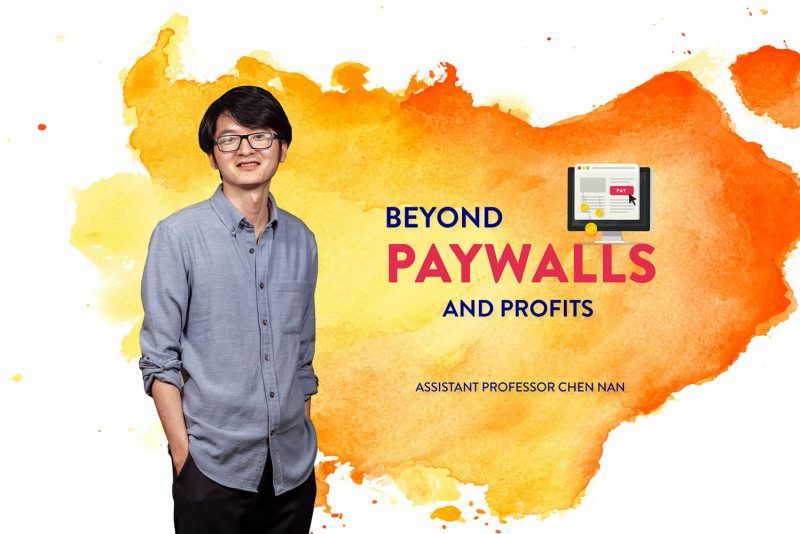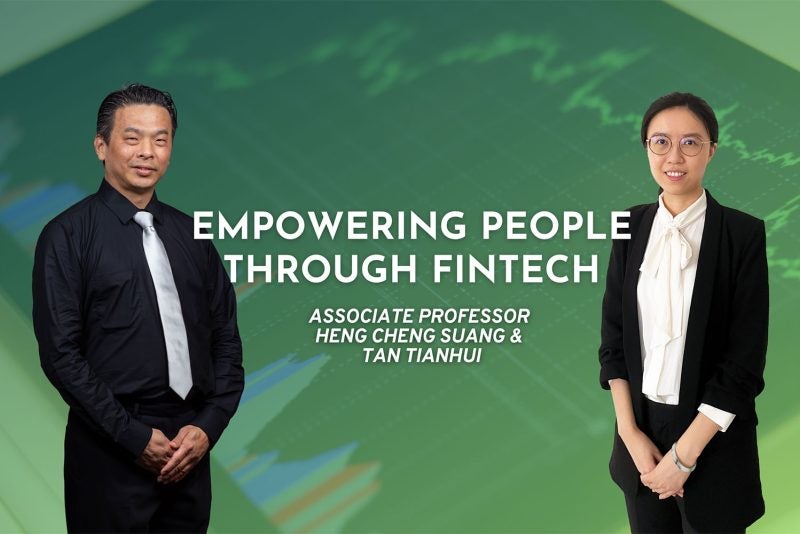Roughly a decade ago, there was a big shake-up to the startup world. Entrepreneurs looking to fund their latest business venture no longer had to seek seed capital from traditional sources such as angel investors or wealthy individuals. Instead, a markedly different financing option was now trending: crowdfunding.
By posting their projects on Kickstarter, Indiegogo and other online platforms, entrepreneurs could elicit small amounts of capital from large numbers of people to raise sufficient capital to launch their ventures. Crowdfunding offers multiple benefits over angel financing: access to a bigger pool of investors, the ability to retain autonomy over business matters, and an opportunity to test product marketability, just to name a few. “It also has a much lower entry barrier,” says Jungpil Hahn, a professor at NUS Computing whose studies open innovation.
By virtue of these factors, projects that might not have otherwise gotten the attention of angel investors managed to garner sufficient interest on the Internet and were successfully launched. For instance, some of Kickstarter’s most well-known campaigns include a smartwatch called Pebble that garnered $20 million in crowdfunding, hitting its $500,000 goal in mere minutes; a cooler box with Bluetooth speakers and a built-in blender that received over $13 million in backing; and a card game about exploding kittens that drew nearly 220,000 funders — making it the most-backed project in Kickstarter history.
“The trouble is, you see a lot of these very successful high-profile cases on crowdfunding websites, but you very rarely see those actually mature from the garage and go out and incorporate into legitimate companies, that then grow into the next unicorn,” says Hahn. The startup behind ‘The Coolest Cooler’, for instance, ran out of money five years after it first launched.
In most instances, the natural trajectory of a startup that has secured initial funding is to develop a product and advance its business models, before seeking larger amounts of money from venture capitalists (VCs) — investors who provide funds in exchange for an equity stake or shares in a company’s profits — to grow further. “That’s the next milestone threshold,” explains Hahn.
But as crowdfunding began to grow in popularity, a question intrigued him and his collaborators Keongtae Kim at the Chinese University of Hong Kong and Sunghan Ryu at Shanghai Jiao Tong University: “We wondered how crowdfunding might influence subsequent VC investments in the later stages of a startup’s financing lifecycle,” says Hahn.
“Basically, how would we help an entrepreneur answer this question: ‘Should I go for angel investing or should I put my project on a crowdfunding platform? Which one would yield me a higher chance of getting subsequent VC funding?’” he says.
An easy route in, but a harder one up
To figure out the answer, the three researchers gathered data on 283 technology-related startups that were successfully crowdfunded on Kickstarter between 2011 and 2013. They then used Crunchbase, a database that provides information on public and private companies, to construct a comparable sample of 708 angel-financed startups from the same period.
“We tried to match the data to get very similar companies in terms of what they offer, the composition of their founding and management team, geographical location, and so on,” Hahn explains. “It’s so we can have a fair comparison about who is more or less likely to attain the next step of fundraising through VC funding.”
What he and his collaborators found was discouraging for crowdfunded startups — on average, they were 38.9% less likely to receive follow-on VC investments compared with angel-financed startups. Additionally, the effect was more pronounced when firms were based outside of startup hubs like Boston, New York, and San Francisco.
Of the findings, which were published in the journal MIS Quarterly in September, Hahn says: “You might get early success with crowdfunding, but it might hamper you in the long run with regard to subsequent venture capital, at least in the current startup financing ecosystem.”
He believes it’s because when a startup is crowdfunded, it somehow signals to venture capitalists that it’s of a lower-quality than an angel-invested one, even though that may not necessarily be the case. “Startups that already have angel investing usually possess the properties VCs are interested in, so VCs are more familiar with and confident in evaluating such startups,” explains Hahn.
“But I think that’s going to change over time and VCs will learn to adapt as they have more opportunities to evaluate crowdfunded firms,” he adds.
Until then, Hahn has this advice to offer entrepreneurs: “To succeed in this game, if you go with crowdfunding, then you want to make sure that you produce the right signals to overcome this challenge and supplement some of the things that angel invested firms might outperform you in — for example, having a strong management team or being affiliated with good advice networks. This will help increase your likelihood of getting VC funding.”
Same signal, different interpretation
Interestingly, Hahn and his collaborators found the converse to be true when it came to corporate VCs (CVCs): they appeared to favour crowdfunded startups over angel-invested ones. Unlike independent venture capitalists (IVCs), CVCs are usually established corporations that invest in startups “mostly for strategic synergies,” explains Hahn. “They have a mandate to identify products or technologies that will complement the current ones their parent companies have.”
Because CVCs have such a goal in mind, they’re more likely to pay attention to how viable a startup’s product is, says Hahn. “If you already have something that has achieved product-market fit, as is usually the case with crowdfunded startups, it provides a much easier sell to CVCs. But with angel investing, the product specificity or refinement is much less and it’s more about saying, ‘Oh, you have a good team that receives good advice, so everything will be good.’”
“CVCs have a different kind of interpretation scheme compared with investment venture capitalists,” he says. “They respond differently to quality signals from crowdfunding and angel investing because their investment objectives and strategies are quite different.”
At the end of the day, entrepreneurs need to carefully weigh the pros and cons when selecting which early-stage funding source to go with as they’re starting out, says Hahn. Crowdfunding allows one to observe potential market demand, attract early adopters, and garner feedback to improve the product being developed — which can be crucial to a startup’s commercial and technical success. Thus, crowdfunding success can serve as a quality signal to CVCs. However, corporate venture capitalists comprise the minority of later-stage investors, and their funding often tends to be more volatile compared with IVCs.
So if a startup requires a series of equity financing rounds, specifically from IVCs for rapid growth, then pursuing angel investing would be the better choice, says Hahn.
In the future, he hopes to explore other aspects of the signalling-investment relationship. “One thing that I’m really interested in is how evaluations change over time, sort of a longitudinal study,” explains Hahn. “If you want to get funding, you often have to include the buzzword of the day — five years ago, it was blockchain; today, it’s generative AI. But nobody really fully understands these things.”
“So in that context where the ecosystem has very little information on such emerging technologies, how do signals work? How do these evaluation schemes change with time?” he asks. “I’m very interested in studying that.”
































